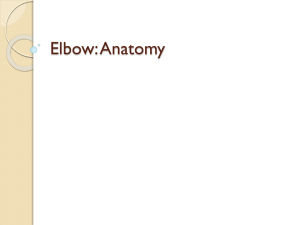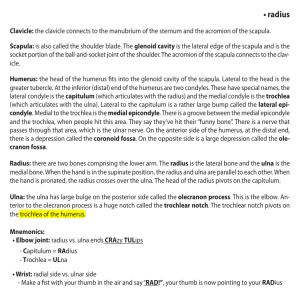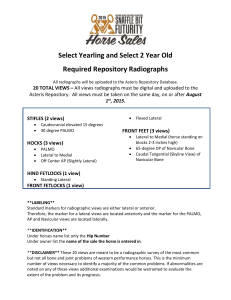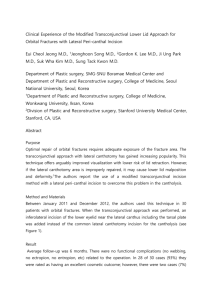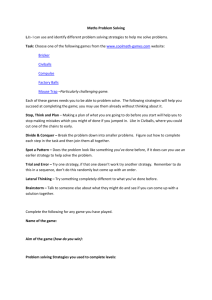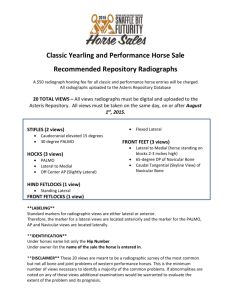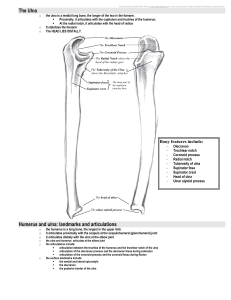THE BOYD POSTEROLATERAL EXPOSURE7 Exposure of the lateral
advertisement
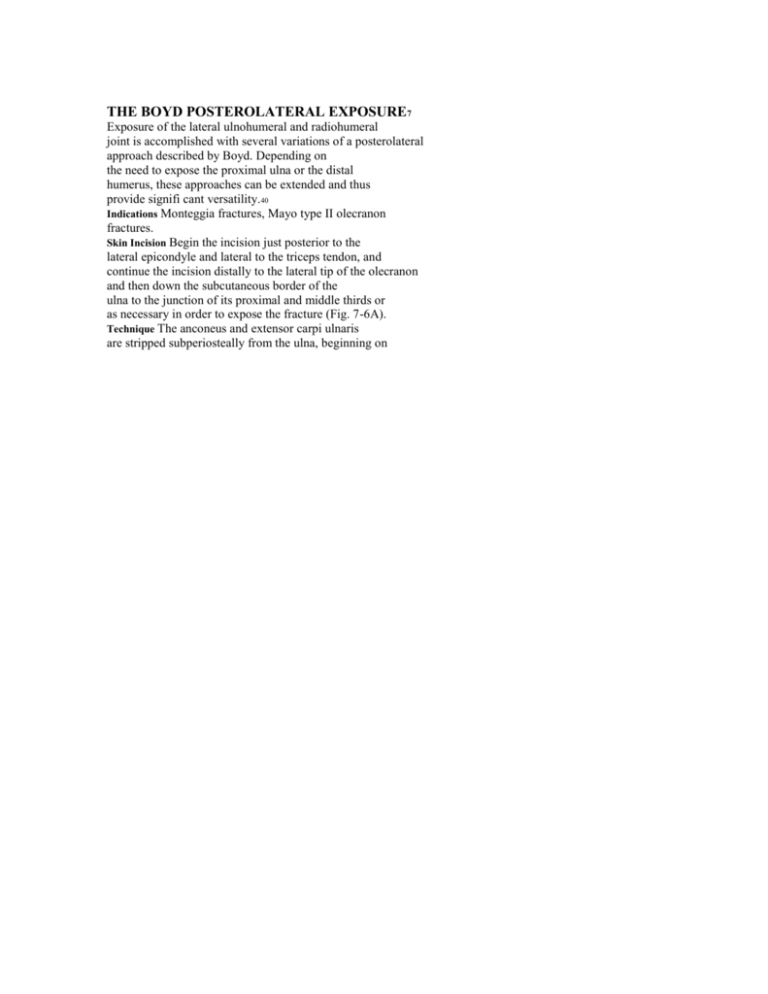
THE BOYD POSTEROLATERAL EXPOSURE7 Exposure of the lateral ulnohumeral and radiohumeral joint is accomplished with several variations of a posterolateral approach described by Boyd. Depending on the need to expose the proximal ulna or the distal humerus, these approaches can be extended and thus provide signifi cant versatility.40 Indications Monteggia fractures, Mayo type II olecranon fractures. Skin Incision Begin the incision just posterior to the lateral epicondyle and lateral to the triceps tendon, and continue the incision distally to the lateral tip of the olecranon and then down the subcutaneous border of the ulna to the junction of its proximal and middle thirds or as necessary in order to expose the fracture (Fig. 7-6A). Technique The anconeus and extensor carpi ulnaris are stripped subperiosteally from the ulna, beginning on the lateral subcutaneous crest of the bone and refl ecting THE BOYD POSTEROLATERAL EXPOSURE Exposure of the lateral ulnohumeral and radiohumeral joint is accomplished with several variations of a posterolateral approach described by Boyd. Depending on the need to expose the proximal ulna or the distal humerus, these approaches can be extended and thus provide signifi cant versatility. Indications Monteggia fractures, Mayo type II olecranon fractures. Skin Incision Begin the incision just posterior to the lateral epicondyle and lateral to the triceps tendon, and continue the incision distally to the lateral tip of the olecranon and then down the subcutaneous border of the ulna to the junction of its proximal and middle thirds or as necessary in order to expose the fracture (Fig. A). Technique The anconeus and extensor carpi ulnaris are stripped subperiosteally from the ulna, beginning on the lateral subcutaneous crest of the bone and refl ecting the muscles volarward. The supinator is released subperiosteally from its ulnar insertion, and the entire muscle mass is refl ected anteriorly (see Fig. B). Be careful not to detach the ulnar attachment of the lateral ulnar collateral ligament. Thus, the lateral surface of the ulna and the proximal portion of the radius are adequately exposed (see Fig. C). The substance of the refl ected supinator protects the deep branch of the radial nerve. If greater exposure of the radius is desired, the recurrent interosseous artery (not the dorsal interosseous artery) is divided in the proximal portion of the wound, and the muscle mass is further refl ected volarward to expose the interosseous membrane. The deep branch of the radial nerve remains protected.

